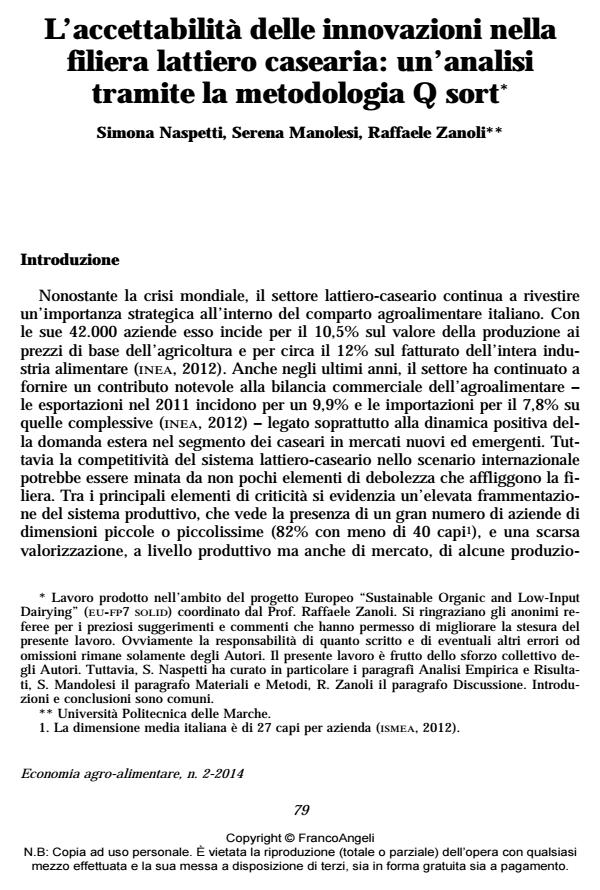Innovation acceptability in dairy supply chain: a Q methodology analysis
Journal title ECONOMIA AGRO-ALIMENTARE
Author/s Simona Naspetti, Serena Mandolesi, Raffaele Zanoli
Publishing Year 2014 Issue 2014/2
Language Italian Pages 17 P. 79-95 File size 150 KB
DOI 10.3280/ECAG2014-002005
DOI is like a bar code for intellectual property: to have more infomation
click here
Below, you can see the article first page
If you want to buy this article in PDF format, you can do it, following the instructions to buy download credits

FrancoAngeli is member of Publishers International Linking Association, Inc (PILA), a not-for-profit association which run the CrossRef service enabling links to and from online scholarly content.
This work illustrates the acceptability of innovations in the Italian dairy supply chain. The research is part of a larger study financed by the EU Commission (EU-FP7 SOLID - "Sustainable Organic and Low-Input Dairying") aimed at optimising the financial, agronomic and nutritional aspects of the organic and low input dairy sector. Several studies demonstrate how the development and the adoption of innovations are critical in improving and increasing the competitiveness of the supply chains (es. Stewart-Knox & Mitchell, 2003). In this work, the Q methodology was applied to investigate the innovation acceptability to organic and low input dairy supply chain members (Consumers, Farmers and Retailers & Processors). The aim was to identify and analyse different and common opinions of the Q participants. The results showed two different perspectives. The first one is a ‘sustainable’ view, shared by the majority of participants to the Q study; the second one is more practical, and mostly adopted by farmers. Some methodological and strategic implications are also presented in detail.
Keywords: Dairy, organic, low input, innovation, Q methodology, supply chain
Jel codes: Q01, Q18, Q21, Q56
- Exploring rural tourism experiences through subjective perceptions: A visual Q approach Wookhyun An, Silverio Alarcón, in Spanish Journal of Agricultural Research /2020 pp.e0108
DOI: 10.5424/sjar/2020183-16572
Simona Naspetti, Serena Mandolesi, Raffaele Zanoli, L’accettabilità delle innovazioni nella filiera lattiero casearia: un’analisi tramite la metodologia Q sort in "ECONOMIA AGRO-ALIMENTARE" 2/2014, pp 79-95, DOI: 10.3280/ECAG2014-002005